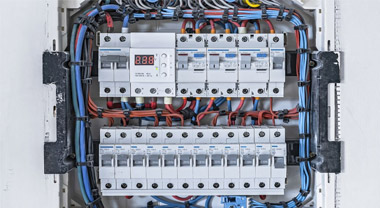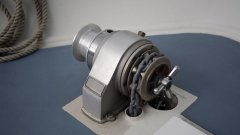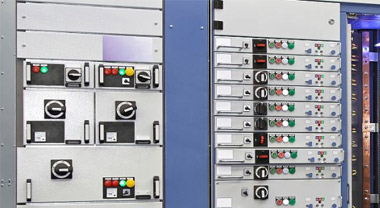3 factors affecting circuit breaker performance
There are many factors that affect the performance of circuit breakers, which can be roughly divided into factors such as the influence on the circuit breaker's current carrying capacity, the influence on the circuit breaker's protection performance, and the influence on the short circuit characteristics of the circuit breaker.
1. Current carrying capacity of the circuit breaker
Under normal circumstances, the current carrying capacity refers to the maximum working current allowed by the circuit breaker, that is, the rated current of the circuit breaker. However, in some special environments, if the ambient temperature is too high, it is necessary to lower the rated operating current, that is, lower the current carrying capacity, so that the circuit breaker can work normally at this temperature. The specific current value after adjustment is in the circuit breaker product design And the application needs to be considered. For complete sets of equipment, the rated current specified in the complete set of equipment is the maximum operating current of the main switch circuit breaker, which is not necessarily equal to the rated current of the circuit breaker. Generally, the most direct reflection of current carrying capacity is the temperature rise of the circuit breaker terminal. The national standard has strict regulations on the temperature rise. For complete equipment, the maximum temperature rise limit cannot exceed 70K, so the current carrying capacity affects the performance of complete equipment products [4]. If the current carrying capacity is too low, the utilization rate of the circuit breaker in the complete set of equipment is too low, and the economic benefits are not good; if the current carrying capacity is too high, the heating temperature of the device will rise too high, and the insulation of the complete set of products will be damaged. Therefore, determining the factors that affect the current carrying capacity is of great significance to the design and application of circuit breaker products in complete equipment.
2. Protection performance of circuit breaker
The protection performance of circuit breakers is mainly divided into overload long delay protection, short circuit delay protection, short circuit transient protection, under voltage protection and single-phase grounding protection (earth leakage current). As an important component in the complete set of equipment, the circuit breaker plays the role of making and breaking the circuit. It is a device to protect the safety of the circuit. Therefore, the protection performance of the circuit breaker is also a very important performance index of the circuit breaker. Among them, the circuit breaker overload long-delay protection mainly refers to the ability of the circuit to break the circuit when it exceeds a certain limit of the rated current of the circuit breaker. The prescribed limits are all coefficients determined according to the rated current of the circuit breaker. When the circuit breaker is used in a complete set of equipment, the current carrying capacity will usually be reduced. Therefore, the overload protection performance setting value of the circuit breaker must be considered in the design and application of the complete set of equipment and the actual carrying capacity of the correlation, otherwise it is easy to fail when the circuit is overloaded. Tripping in time can cause safety accidents and cause unnecessary economic or property losses.
3. Short circuit characteristics of circuit breakers
The short-circuit characteristics of low-voltage circuit breakers are important performance and safety indicators of circuit breakers. When a short circuit accident occurs in the circuit, whether the circuit breaker can break the circuit in time is an important guarantee for the safety of electricity. Therefore, the short circuit characteristics of the circuit breaker should be considered in combination with the actual design and application of the circuit breaker in the complete set of equipment. Safe operation provides protection to avoid unnecessary property losses. There are many aspects that affect the short-circuit characteristics of the circuit breaker. For example, the installation method is different. GB 14048 stipulates that the circuit breaker is generally installed vertically. However, under some special conditions, it is limited by space limitations and the ease of pulling and closing. Horizontal installation is required, so the short-circuit characteristics of the circuit breaker in this case may not be fully guaranteed. At high altitudes, it is easy to affect the short-circuit characteristics of the circuit breaker. Because of the thin air in the plateau area, it will affect the arc extinguishing performance of the air medium arc extinguishing electrical appliance, which will prolong the arc extinguishing time of the circuit breaker and cause serious contact burnout. The making and breaking capacity is reduced. At the same time, the size of the space will also affect the short-circuit characteristics. In a complete set of equipment, a large amount of energy is released when the circuit breaker is opened, which will damage the cabinet structure and cause equipment damage. Therefore, when product design under special working conditions is required, it is necessary to understand the degree of influence on the short-circuit characteristics of the circuit breaker. If necessary, it is necessary to conduct a short-circuit characteristic test of the circuit breaker under special working conditions to ensure the normal use of the equipment and avoid safety accidents. .
The above three aspects are the main considerations in the design and application of circuit breakers in complete equipment. Because the current-carrying capacity is not only related to the temperature rise value of the terminal, but also affects the long-time overload protection performance of the circuit breaker, so the current-carrying capacity will be analyzed with some examples.




